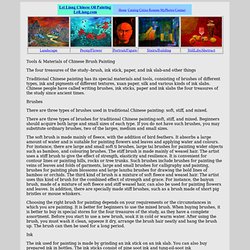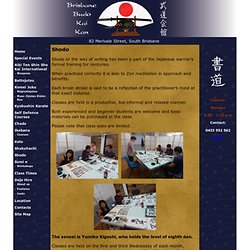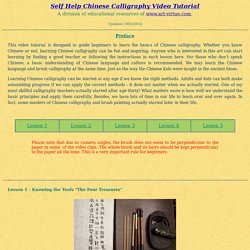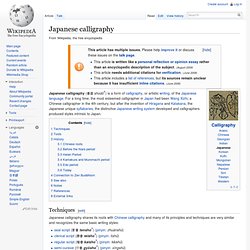

Three pearltrees and a tip #69 - helen.duley - Gmail. Jun Ware. Jun Ware Jun ware is reputed to be one of the 5 celebrated wares of the Song dynasty.

Together with Ge ware, they are the two more controversial Song wares with much still not understood regarding the wares. In the case of Ge ware, its place and period of manufacture is still subject to much debates. As for Jun ware, there are still unresolved issues such as the date it was first made and the dating of Guan Jun. The 1973-1974 excavation of Yuzhou Juntai (禹州均台) kiln has basically confirmed the actual site of production for Guan Jun. Origin of Jun ware Presently, one of the more widely accepted view is that Song/Jin Jun ware was a further development of a type of Tang black/brown ware decorated with opalescent white glaze splashes with bluish streaks. Sherds of Tang Jun It is therefore not inconceivable that the Song/Jin Henan potters further experimented with the recipe and finally successfully produced the distinct optical blue Jun wares of the Song/Yuan period. Song/Jin Jun wares. Untitled.
Chinese Landscape Peony Flower Oil Painting,Modern Contemporary Artist Painter,Flore,Home Plan Projects,Interior Design,Office Decoration. Tools & Materials of Chinese Brush Painting.

Henderson_thesis.pdf (application/pdf Object) 萬葉庵 the Manyo’an Collection. Japanese Art. Katsushika Hokusai and Japanese Art, Summary: Overview of Hokusai's art work.

The best-known Japanese artist was extremely productive (over 30,000 art works) and deeply influenced by Western art, esp. Dutch landscape and nature. In return, Hokusai's works influenced Western artists such as Van Gogh and Whistler. Hokusai's best-known work, and Japan's most famous painting is "The Great Wave", which is actually Western art seen through the style of Japanese art. By Andreas Ramos, M.A. Katsushika Hokusai, Japan's best known artist, is ironically Japan's least Japanese artist. Hokusai (1760-1849) lived during the Tokugawa period (1600 to 1867). "From the age of six I had a mania for drawing the shapes of things.
Hokusai started out as a art student of woodblocks and paintings. Although Chinese and Japanese paintings had been using long distance landscape views for 1,500 years, this style had never entered the woodblock print. What was the influence on Hokusai? Philips Koninck, (1619-1688, Amsterdam) Shodokai - Section 1 Kaisho Basic. Brisbane Budo Kai Kan - Shodo. Shodo Shodo or the way of writing has been a part of the Japanese warrior’s formal training for centuries.

When practiced correctly it is akin to Zen meditation in approach and benefits. Each brush stroke is said to be a reflection of the practitioner’s mind at that exact instance. Classes are held in a productive, but informal and relaxed manner. Both experienced and beginner students are welcome and basic materials can be purchased at the class. Please note that class sizes are limited. The sensei is Yumiko Kigoshi, who holds the level of eighth dan. Classes are held on the first and third Wednesday of each month, though it is always a good idea to call ahead first, if it is your first time.
Cost is $20 per hour Most materials can be purchased at the class for $2 per item. Chinese Calligraphy Video Tutorial. Self Help Chinese Calligraphy Video TutorialA division of educational resources of www.art-virtue.com.

Updated: 10/03/2014 Preface This video tutorial is designed to guide beginners to learn the basics of Chinese calligraphy. Whether you know Chinese or not, learning Chinese calligraphy can be fun and inspiring. Anyone who is interested in this art can start learning by finding a good teacher or following the instructions in each lesson here. Japanese calligraphy: The history and forms of Japanese calligraphy. Kaisho Kaisho literally means “correct writing”.

In other words, this is the style in which each of the strokes is made in a deliberate and clear way, creating a form that is very similar to the printed version of the character that one might see in a newspaper. This is the form that students of calligraphy study first, since it is close to the everyday written characters they are already familiar with, but at the same time it gives them the opportunity to get used to using the brush (fude) correctly.
Below you can see the character for “dream” written in kaisho style on the left, and on the right as written using a word processor. Notice how similar they are in form. Japanese calligraphy. Japanese calligraphy (書道, shodō?)

Is a form of calligraphy, or artistic writing, of the Japanese language. For a long time, the most esteemed calligrapher in Japan had been Wang Xizhi, a Chinese calligrapher in the 4th century, but after the invention of Hiragana and Katakana, the Japanese unique syllabaries, the distinctive Japanese writing system developed and calligraphers produced styles intrinsic to Japan. Techniques[edit] Japanese calligraphy shares its roots with Chinese calligraphy and many of its principles and techniques are very similar and recognizes the same basic writing styles: Tools[edit] A traditional inkstone to grind ink and water against.
A typical brush used for calligraphy. In modern calligraphy, a number of tools are utilized to make a composition. An inkstick (墨, sumi?). Chinese Calligraphy.